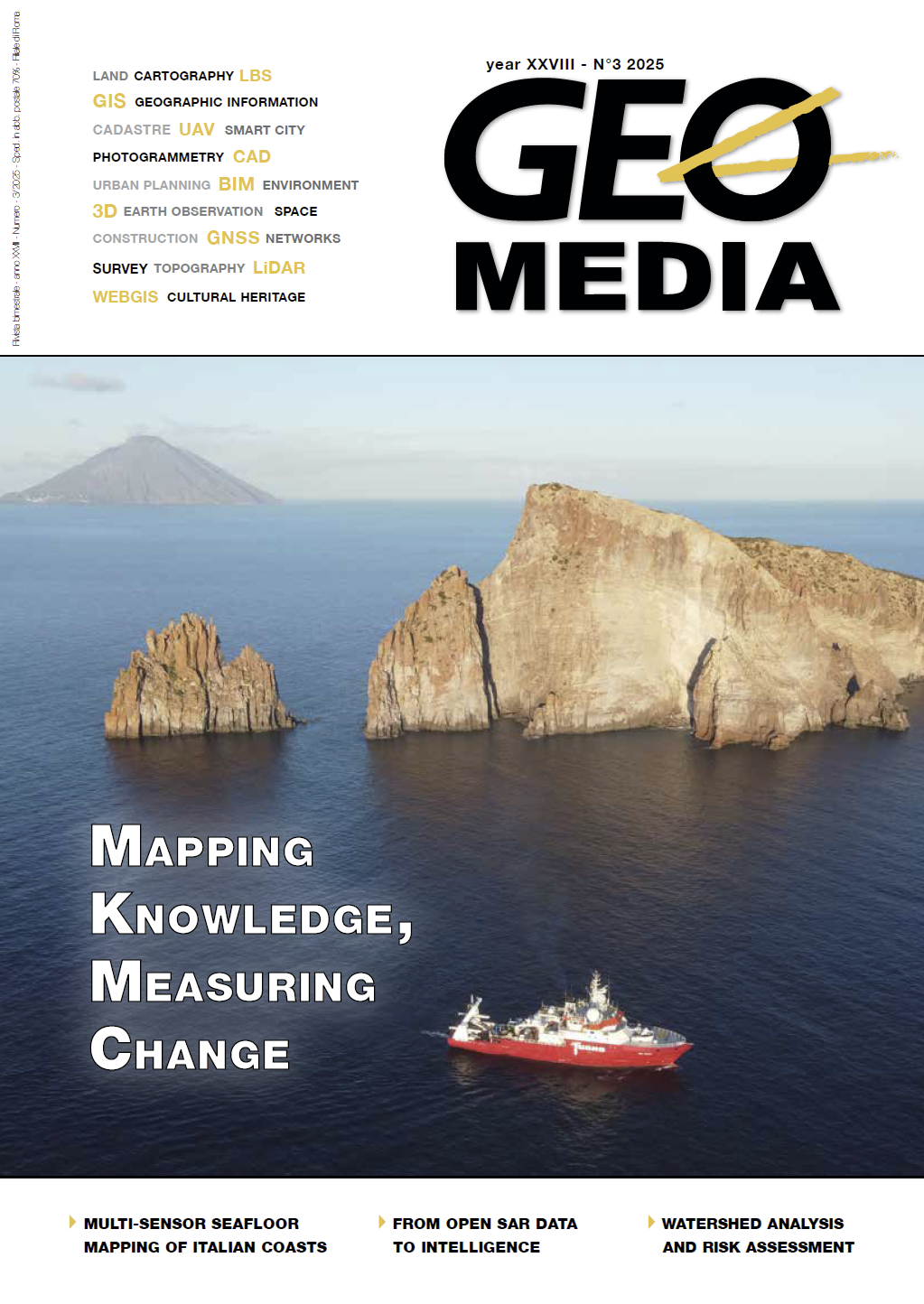Continental-Scale Assessment of Urban Sprawl in Africa (2016–2024)
Parole chiave:
urban sprawl, africa, image analysis, satellite imagesAbstract
This study provides a comprehensive, continent-wide quantification of urban sprawl in Africa between 2016 and 2024 by exploiting the Dynamic World V1 dataset within Google Earth Engine. We computed the dominant land-cover class per pixel for three time windows (2015–2016, 2019–2020, 2023–2024), aggregated built-up area changes nationally, and calculated both absolute and relative growth rates.
Results reveal a net increase of 60,687 km² of built-up land in Africa, driven primarily by Ethiopia, Nigeria, and Kenya in absolute terms, while smaller states like the Central African Republic and Mauritius exhibit the highest percentage gains. Our findings highlight pronounced spatial heterogeneity in urban expansion and underscore the need to integrate socioeconomic and governance indicators to inform sustainable land-use planning across Africa.
Riferimenti bibliografici
Anderson JR, Hardy EE, Roach JT & Witmer RE A Land Use and Land Cover Classification System for Use with Remote Sensor Data. U.S.
Geological Survey , Report 964 (1976).
Brown CF et al. Dynamic World training dataset for global LULC categorization of satellite imagery. PANGAEA (2021). https://doi.
org/10.1594/PANGAEA.933475
Brown CF, Brumby SP, Guzder -Williams B. et al. Dynamic World, Near real-time global 10 m land use land cover mapping. Scientific Data 9,
(2022). https://doi.org/10.1038/s41597-022-01307-4
Deng, X., Shang, S., & Li, S. (2022). Dynamic World: A near real-time global land use land cover dataset at 10 m resolution derived from Sentinel-
imagery. International Journal of Remote Sensing, 43 (10), 3500–3525.
ESA. Comparative validation of recent 10 m-resolution global land cover maps. Remote Sensing of Environment (2024).
Food and Agriculture Organization. (2015). Global Administrative Unit Layers (GAUL) . FAO.
Gorelick , N., Hancher , M., Dixon, M., Ilyushchenko , S., Thau , D., & Moore, R. (2017). Google Earth Engine: Planetary-scale geospatial
analysis for everyone. Remote Sensing of Environment, 202 , 18–27. https://doi.org/10.1016/j.rse.2017.06.031
Iandolo , A., Rossi, F., & Bonomi , M. (2023). Urban sprawl dynamics in West African cities: A remote sensing approach. Journal of Urban Studies,
(2), 213–231.
Li, Q., Qiu, GY, Ma, R., Schmitt, M., & Zhu, AX (2020). Continental-scale urban mapping using Google Earth Engine. Remote Sensing of Environment, 234 , 111482.
Mhangara , P., Gidey , WT, & Manjoo , V. (2024). Monitoring urban sprawl in Southern Africa using satellite imagery and GIS. International
Journal of Applied Earth Observation and Geoinformation , 102 , 102779.
Phiri D. et al. Sentinel-2 Data for Land Cover/Use Mapping: A Review. Remote Sensing 12, 2291 (2020). https://doi.org/10.3390/rs12142291
Schneider, A., & Woodcock, C.E. (2008). Compact, dispersed, fragmented, extensive? A comparison of urban growth in twenty-five global cities
using remotely sensed data. Landscape and Urban Planning, 87 (1), 54–73.
Seto , K.C., Güneralp , B., & Hutyra , LR (2012). Global forecasts of urban expansion to 2030 and direct impacts on biodiversity and carbon.
Proceedings of the National Academy of Sciences, 109 (40), 16083–16088.
Shekhar , S., & Xiong , H. (2008). Encyclopedia of GIS . Springer.
United Nations Department of Economic and Social Affairs. (2018). World Urbanization Prospects: The 2018 Revision . United Nations.
World Bank. (2021). Ethiopia Urbanization Review . World Bank Publications.
Dowloads
Pubblicato
Fascicolo
Sezione
Licenza

Questo volume è pubblicato con la licenza Creative Commons Attribuzione - Non commerciale - Condividi allo stesso modo 4.0 Internazionale.
Gli autori che pubblicano su questa rivista accettano le seguenti condizioni:- Gli autori mantengono i diritti sulla loro opera e cedono alla rivista il diritto di prima pubblicazione dell'opera, contemporaneamente licenziata sotto una Licenza Creative Commons - Attribuzione che permette ad altri di condividere l'opera indicando la paternità intellettuale e la prima pubblicazione su questa rivista.
- Gli autori possono aderire ad altri accordi di licenza non esclusiva per la distribuzione della versione dell'opera pubblicata (es. depositarla in un archivio istituzionale o pubblicarla in una monografia), a patto di indicare che la prima pubblicazione è avvenuta su questa rivista.
- Gli autori possono diffondere la loro opera online (es. in repository istituzionali o nel loro sito web) prima e durante il processo di submission, poiché può portare a scambi produttivi e aumentare le citazioni dell'opera pubblicata (Vedi The Effect of Open Access).





